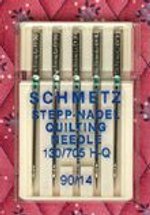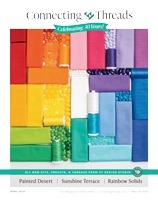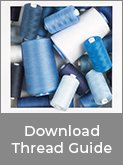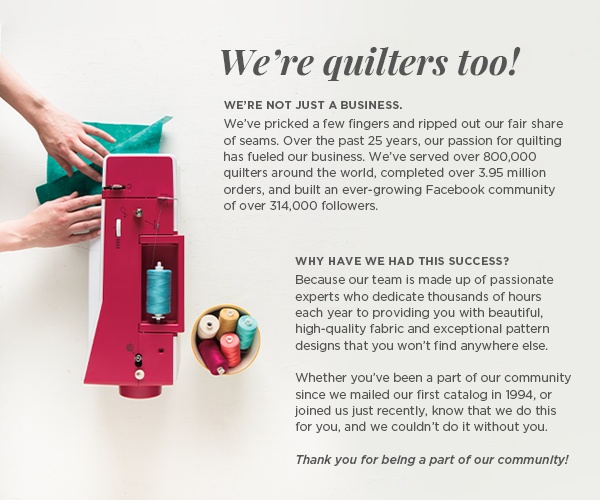Machine Sewing Needles 101
by Judy Reed
There are many different types of sewing machine needles, and a lot of variables to consider when choosing the right one. Your sewing machine, your thread type and size, and the fiber content and thickness of the fabric you are using all factor into deciding what needle you should use. You should also change your needle often. I’ve heard the rule that you should change your needle every time you start a new project.
Titanium-coated needles have been available for industrial and long arm machines for years and are now available for home sewing machines. They have a very thin layer of titanium nitride that keeps them sharper longer. They last longer than other needles so you don’t have to change them as often.
Fabric/Thread/Needle Combination
There isn’t a specific needle type for every combination but, there are many specialty needles for specific types of threads and fabrics. A general rule is the finer the fabric you are sewing with, the finer the needle should be. If the needle eye is too small for the thread you are using the thread will shred; if it is too big the needle may leave holes in the fabric because the thread isn’t thick enough to fill them. When selecting a needle for your sewing machine another general rule is to use a ball point for knits and a sharp point for woven fabrics. A Universal needle will work for both.
Needle Size
There are two size numbers on the package. The smaller number is American (universal) sizing and the larger number is European (metric). It doesn’t matter what order you see the numbers in, they mean the same thing. The larger the number on the package size, the thicker/larger the needle. This is the opposite of the needles you purchase for hand sewing. A size 60/8 is very fine and 120/19 is heavy duty. For general piecing on quilting fabric I like to use a 70/10 or 80/12 and adjust my size depending on the project.
Universal
Slightly rounded point. General-purpose needle suitable for a wide range of fabrics. It can be used on woven fabrics as well as knits. If you are only going to use one type of needle for quilt projects, make it a Universal.
Embroidery
Has a larger eye so thicker threads can go through the eye. Slightly rounded point. Specially designed shaft and longer eye for embroidery and decorative stitching and embellishing using specialty threads.
Quilting
Tapered shape designed to stitch through multiple layers and crossed seams. The shape of this needle makes it ideal for quilting.
Topstitch
Extra sharp for heavier fabrics and quilting. It has a longer eye so you can use heavier threads without leaving holes in the fabric.
Needle Accessories
Sewing machine needles are color coded in case you can’t read the size on the needle. If you change the type of needle that you are using often, the Clover Sort ‘n Store Pincushion is a great idea for organizing your needles until you are ready to use them again (or you can make your own labeled pincushion).
Shop for machine needles at Connecting Threads >













